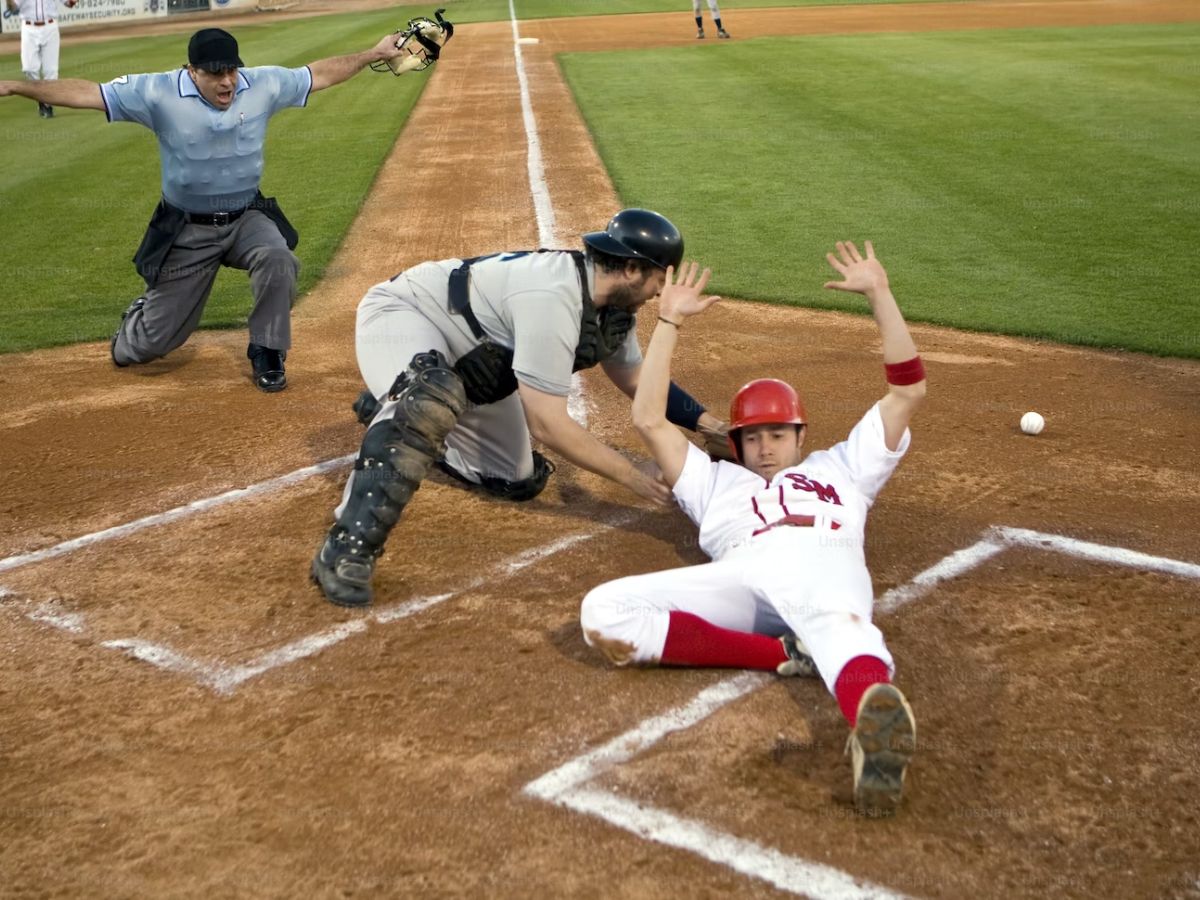
The slugging percentage is a baseball statistic that measures a player’s ability to hit for power. It is calculated by dividing the total number of bases a player has earned by the total number of at-bats.
Slugging percentage provides a more comprehensive view of a player’s hitting performance compared to just looking at batting average. This measure takes into account not only the number of hits but also the extra bases that result from those hits, such as doubles, triples, and home runs.

A higher slugging percentage indicates a player who consistently hits for extra bases and is therefore considered more valuable in terms of offensive production.
Contents Inside
Slugging Percentage is a statistical measure that reflects a player’s power hitting abilities. It is calculated by dividing the total number of bases a player accumulates by the total number of at-bats. This measurement provides insight into a player’s ability to hit for extra bases, such as doubles, triples, and home runs.
A higher slugging percentage indicates a player who consistently hits the ball with power. To calculate this statistic, you add the total number of singles, the number of doubles multiplied by two, the number of triples multiplied by three, and the number of home runs multiplied by four.
Then, you divide that sum by the total number of at-bats. Understanding slugging percentage is crucial in evaluating a player’s overall offensive contributions to a team.
Slugging percentage gauges a player’s power potential, an essential metric for assessing hitting performance. It measures the ability to hit for extra bases, indicating how frequently a player can drive the ball. Compared to other offensive statistics, like batting average or on-base percentage, slugging percentage provides a more comprehensive evaluation of a player’s offensive contributions.
While batting average only considers hits, slugging percentage factors in extra-base hits, painting a more accurate picture of a player’s ability to create runs. It encompasses doubles, triples, and home runs, giving credit to hitters who consistently hit for power.
This metric enables teams to identify players who excel at driving in runs and have the potential to change the course of a game with their hitting prowess. As a key component in evaluating hitting performance, slugging percentage provides valuable insights for players, coaches, and fans alike.
Slugging percentage is a crucial statistic in baseball that reflects a player’s power at the plate. Several key factors can affect a player’s slugging percentage. One of these factors is their batting average. The higher their batting average, the more impactful it is on their slugging percentage.
Another factor is the number of extra-base hits a player accumulates during a season. Whether it’s doubles, triples, or home runs, these hits greatly contribute to a player’s slugging percentage. Additionally, plate discipline plays a significant role. A player’s ability to work the count, draw walks, and avoid swinging at bad pitches can increase their chances of hitting for power.

Understanding the relationship between these factors and slugging percentage is vital for analyzing player performance. It provides valuable insights into a player’s offensive capabilities and overall contribution to the team.
Developing a powerful swing for increased slugging percentage requires the proper use of lower body mechanics. By generating bat speed and maximizing contact with the ball, hitters can significantly improve their slugging percentage. The lower body plays a crucial role in generating power and transferring it to the swing.
This involves utilizing the hips to initiate the swing and generate rotational force. Additionally, proper footwork and balance are essential for maintaining control and maximizing power. By focusing on these lower body mechanics, hitters can develop a more powerful swing, resulting in increased slugging percentage.
So, understanding and mastering the proper use of the lower body is vital for any hitter looking to improve their slugging percentage and overall performance at the plate.
Building strength and power is crucial for improving your slugging percentage in baseball. Weightlifting exercises can help increase bat speed, resulting in more powerful hits. Incorporating plyometrics into your training routine can further enhance explosive power, allowing you to generate greater force with each swing.
By focusing on exercises that target the muscles used in batting, such as the shoulders, arms, and core, you can develop the necessary strength to deliver impactful hits. Additionally, incorporating compound movements like squats and deadlifts can improve overall body strength, translating to a higher slugging percentage.
Remember to prioritize proper form and technique to prevent injuries and maximize the effectiveness of your training. With consistent effort and dedication to building strength and power, you can elevate your slugging percentage and become a more formidable hitter on the baseball field.
Enhancing your slugging percentage involves adopting mental approaches that boost focus and confidence. Incorporating visualization techniques can help you achieve this. By visualizing successful at-bats and imagining yourself hitting the ball with power and precision, you can sharpen your mental clarity and strengthen your belief in your abilities.
Additionally, developing a strategic mindset when approaching at-bats can greatly impact your slugging percentage. Analyzing the pitcher’s tendencies, studying your opponents, and identifying potential weaknesses in their defense can give you a competitive edge. Moreover, staying mentally disciplined and maintaining a positive mindset throughout the game is crucial.

In essence, by implementing these mental approaches and visualization techniques, you can optimize your slugging percentage and excel on the baseball field.
Slugging Percentage is a statistic used in baseball to measure a player’s power. It calculates the total bases a player earns per at-bat. It is represented as a decimal or a percentage.
Slugging Percentage is calculated by dividing the total number of bases a player earns by the number of at-bats. Singles count as one base, doubles as two, triples as three, and home runs as four bases. It is a measure of a player’s ability to hit for extra bases.
Slugging Percentage is important because it provides insight into a player’s power and ability to hit for extra bases. It helps evaluate a player’s offensive performance beyond just batting average. A high slugging percentage indicates a player who consistently hits for power.
A good slugging percentage varies by position, league, and era. Generally, a slugging percentage above. 500 is considered good, while a slugging percentage above. 600 is excellent. However, it is essential to consider other factors, such as ballpark effects and the player’s context.
The slugging percentage is a vital statistic in baseball that measures the power and effectiveness of a batter. It provides a comprehensive view of a player’s ability to hit for extra bases, making it a key factor in assessing offensive performance.
By calculating the slugging percentage, teams can evaluate a batter’s impact on scoring runs and driving in RBIs. It gives a clearer picture of a player’s contributions beyond simply getting on base. Understanding the components and calculations involved in slugging percentage allows fans, coaches, and analysts to better evaluate and compare hitters across different teams and eras.
Whether you’re a casual fan or a baseball enthusiast, appreciating the significance of slugging percentage will enhance your understanding and enjoyment of the game.
Let’s Build
Contact us todayGet daily tips and tricks for making your best home.
2025 The base Ball Insider